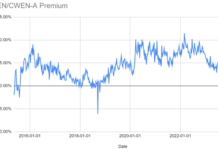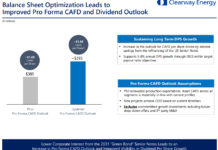Sean Kidney
Where did all the CREBs and QCEBs go? Mystery solved.
The US has for a long time used tax credits to promote the development of oil and gas and other industries. With tax credits the bond issuer still pays a coupon, but their payment is subsidized, effectively lowering the rate of interest paid.
The Obama administration brought in a big program of credits for renewable energy bonds. The plan was that States, large local governments, tribal governments and public power bodies would issue bonds to finance energy efficiency or renewable energy. The US Treasury states that some $5.6bn of allocations to over 1800 applicants have been made for these tax credits. This would seem to suggest that there were $5.6bn of bonds out there, but when we went looking we found we could only find out information about a few of them.
A report late last year by the US National Association of State Energy Officials has helped explain what’s happening. It seems that only a small part of the approved tax credits have actually led to a bond being issued.
The Government allocated $2.4bn for Clean Renewable Energy Bonds (CREBs) and $3.2bn for qualified energy conservation bonds (QECBs). After some investigation, Bloomberg New Energy Finance calculates public issuance at $646m, although they believe there is also a private placement market of up to $400m. That would bring total issuance up to around $1bn. I.e. bonds have been issued for less than 20% of allocated tax credits – that’s a severely under-utilized public finance mechanism!
Renewable energy financing consultant and former Ernst & Young senior partner, Jonathan Johns, has previously written for Climate Bonds Initiative on the benefits of tax-exempt bonds. I asked him what was going on.
First, he said that he’s “not that disappointed”. He says that “these are nudge rather than demand pull measures and require participants to pull schemes together and go through various procedural hurdles involved. In a way they illustrate the future challenges of the industry as it seeks new sources of capital from the bond markets.”
Jonathan says that nudge mechanisms are often undersubscribed. “It’s interesting to note that those states with a strong record in renewables, e.g. California have used very high percentages of their allocations (which are based on population) whereas some more equivocal states have not. For other states there will be a natural cap on appetite if there are state or local borrowing limits.”
“There are lessons to be learned for the US and other jurisdictions – future schemes need to be more streamlined and remove some of the barriers – and also be accompanied by focus on demand stimulation and distribution channels for the bonds themselves.”
“Tax exempt bonds are a cost effective form of support, as relief is limited to the interest on the capital and not based on the capital itself. There’s also a relatively high payback per job created, with that payback localised when there’s a strong energy efficiency component – that’s been the case in over 50% of QECBs issued.”
A relatively large number of bonds issued are for small schemes in the $1m to $5m range. In other jurisdictions this has been difficult to achieve, with bond issues confined to recycling of large scale project finance portfolios.
Johns thinks it’s important to build on the CREB/QECB story and take the bond market to its next stage of development through the Climate Bonds Initiative and other mechanisms. Positive thinking.
Sean Kidney is Chair of the Climate Bonds Initiative, an “investor-focused” not-for-profit promoting long-term debt models to fund a rapid, global transition to a low-carbon economy.








